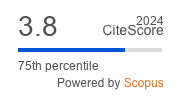Article | Open Access
Comparing the Landscape Fragmentation and Accessibility of Green Spaces in Territories-in-Between across Europe
| Views: | 2797 | | | Downloads: | 1606 |
Abstract: To improve the positive effects provided by green spaces on human well-being in dispersed urban areas is a key challenge for sustainable spatial development in Europe. This article presents a methodology that allows for the comparison of the potential of green spaces in Territories-in-Between across Europe, in a way that crosses the fields of urban ecology and urbanism. The article adds to the existing knowledge and understanding of the relation between the spatial organisation of systems of green spaces and their accessibility to biodiversity and human well-being. Firstly, it adapts the fragmentation index in a way that it can be applied to the specific spatial characteristics of Territories-in-Between. Secondly, it combines the fragmentation index with an indicator for accessibility of green spaces, in order to integrate aspects of ecology, human well-being and the spatial heterogeneity of the relation between them. The methodology is applied to ten areas across western Europe in order to inform decision and policy makers including urban planners, designers and environmental agencies to be able to assess the potential of system of green spaces for biological diversity and human well-being in an integrated manner.
Keywords: accessibility of green spaces; dispersed urban development; ecosystem services; landscape fragmentation
Published:
© Alexander Wandl. This is an open access article distributed under the terms of the Creative Commons Attribution 4.0 license (http://creativecommons.org/licenses/by/4.0), which permits any use, distribution, and reproduction of the work without further permission provided the original author(s) and source are credited.


